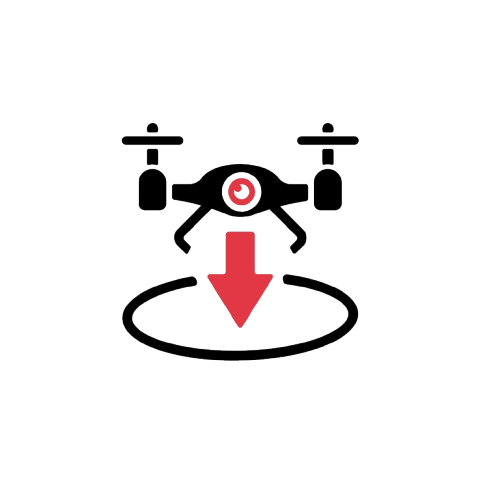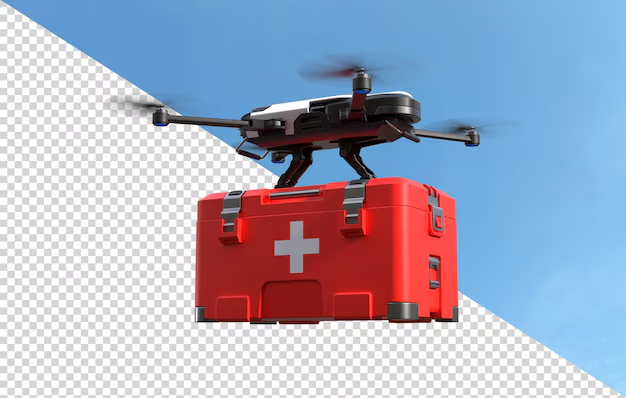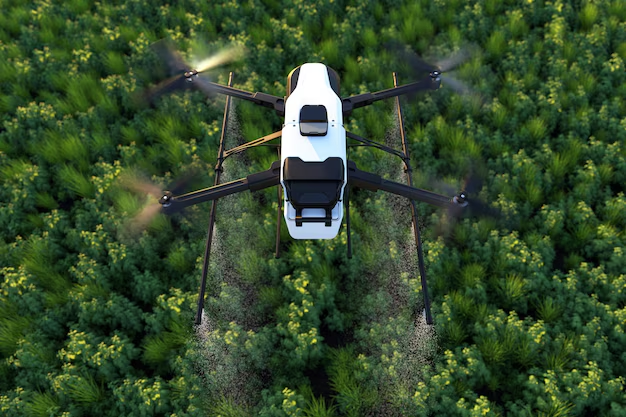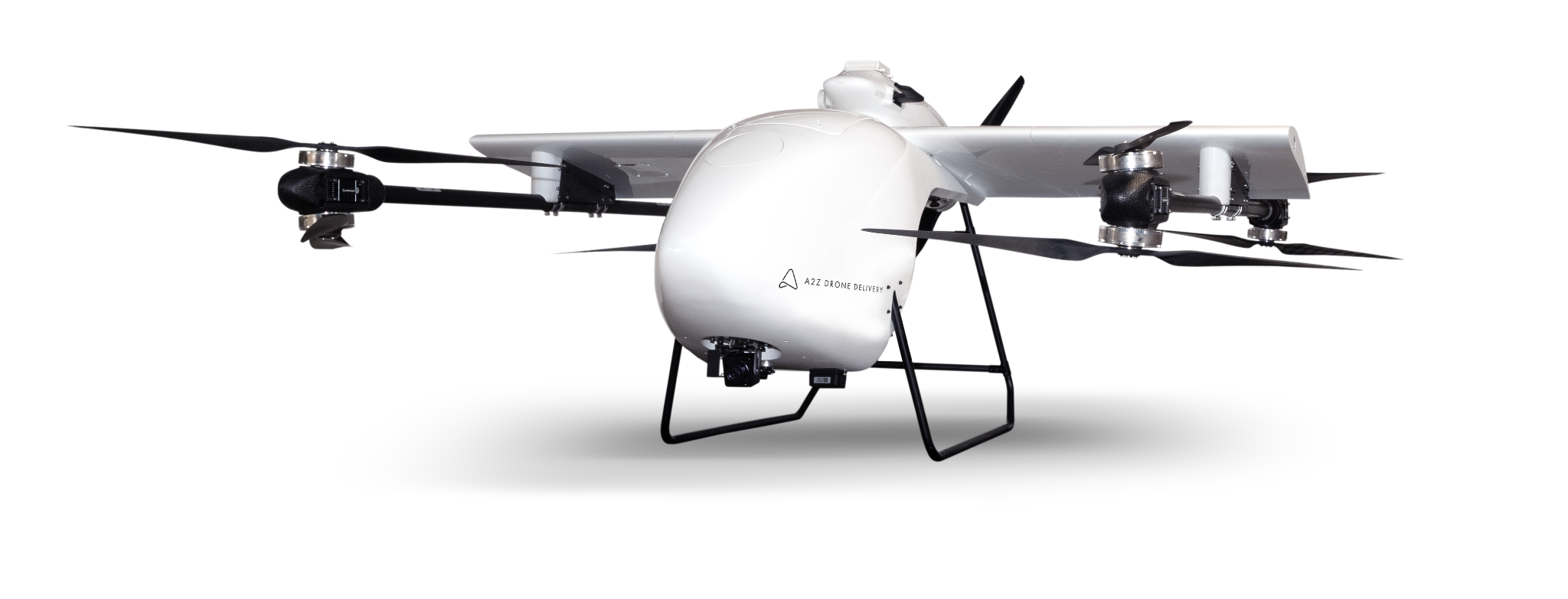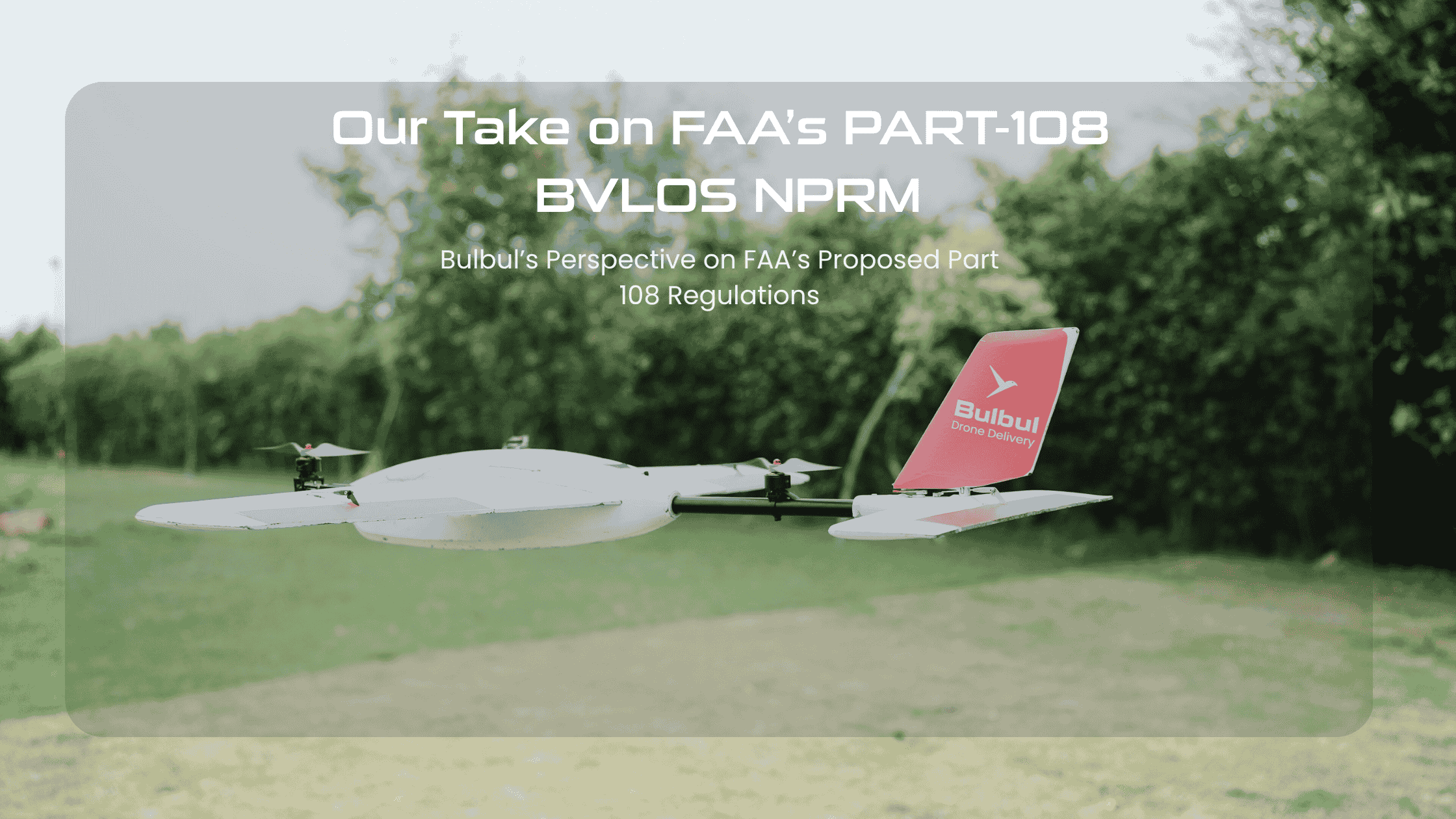Traditional transportation often moves too slowly when someone’s life hangs in the balance. Delivery drones transform everything in that regard. These flying medical couriers are rewriting emergency response guidelines worldwide, particularly in remote locations where roads fail and time runs short.
Medical delivery drones are currently transporting vaccines to flood-cut villages in Ghana, blood to distant clinics in Rwanda, and emergency supplies to disaster areas all around the world. The numbers tell the narrative. Drones have delivered over 500,000 medical supplies in Rwanda alone, and some have reached locations in only 15 minutes.
This is happening today, not futuristic conjecture. Let’s examine how emergency drone delivery operates, why it beats land transportation, and where this technology is headed next.
What Makes Medical Drones Different From Regular Delivery Drones?
When lives are at stake, not all delivery drones are built equal. Medical delivery drones are specialised life-saving machines designed for mission-critical work, not merely smaller iterations of the drones that might bring your internet buying. While medical models concentrate on dependability, precision, and sometimes temperature-controlled compartments, commercial drones prioritise package volume.
Rather than random addresses, they fly pre-selected emergency routes; their operators prepare for medical logistics instead of retail deliveries. Most crucially, they are part of healthcare systems; a blood delivery drone in Rwanda is a flying emergency room supply cupboard that doctors can call upon with a text message, not merely a delivery drone.
How Do Delivery Drones Handle Medical Emergencies?
Consider a rural health clinic confronting a difficult birth. The mother needs blood right now, but by car, the closest blood bank is three hours away. This same situation occurs daily in underdeveloped countries—and drones increasingly offer the answer.
Medical delivery drones work through a well-calibrated mechanism. First, using inventory systems or emergency calls, medical professionals spot immediate needs. Then, in specialised temperature-regulated containers, drone operators at distribution facilities ready the payload—blood, vaccinations, or anti-venom.
Different designs abound among drones. While multi-rotor drones (such as those from firms like Bulbul Drone Delivery) excel at accurate deliveries in difficult terrain, fixed-wing variants resemble miniature aircraft and can cover greater distances. Though some let real-time pilot control for unforeseen challenges, most follow pre-programmed GPS paths.
The location will determine what happens when one arrives. While some drones land at specific locations, others lower cargo using a tether or parachute—especially helpful in crisis areas lacking obvious landing sites. Under Rwanda’s method, health officials get texts with exact drop coordinates, usually reaching packages minutes after touchdown.
Why Are Drones Outperforming Traditional Medical Transport?
Although it is most dramatic, speed is not the sole benefit of drones. While an ambulance would spend hours negotiating washed-out roads, a delivery drone flies straight at 60+ mph, independent of topography. Ghana’s drone fleet lowered vaccine delivery times for immunisation campaigns from 4 hours to under 30 minutes.
Additionally important is cost efficiency. While drone delivery service operations average around $10-15 each trip, helicopters cost thousands per journey. This makes low-resource environments able to have sustainable medical logistics. The government of Rwanda spends less on drone blood deliveries than it does on ground transportation fuel.
Accessibility follows next. Drones fly into war areas, mountain towns, and island communities where roads are risky or impassable. Drones carried medication to places where floodwaters had stranded whole communities for weeks during Malawi’s 2023 cyclone season.
Reliance finishes the picture. Unlike human couriers, drones do not need rest breaks or delay at checks. Crucially important when transporting time-sensitive blood products, Zipline’s African medical delivery drones maintain a 99% on-time delivery rate.
Real-World Cases Where Medical Drones Made a Difference
Drones are already a regular element of emergency procedures in rural Rwandan hospitals. Usually within thirty minutes, a drone shows up when a clinic orders type O-negative blood—the universal donor type. Hospitals used to maintain too large blood supplies, which sometimes expired unused. They now order exactly what is required, guaranteeing availability and minimising waste by 95%.
Ghana’s approach prioritizes kids’ vaccinations. Before drones, health professionals would spend days gathering vaccines from regional centres, running the danger of deterioration en route. Now, maintaining cold chain integrity, drones bring vaccinations straight to more than 2,000 clinics. Immunisation rates in remote locations have, therefore, jumped by 25%.
Disaster response highlights another strength. In contrast, traditional relief was still organising ground access, medical delivery drones surveyed damage after the Türkiye earthquake of 2024 and delivered insulin to stranded diabetics. Under artillery attack, drones in Ukraine also now carry medications and blood to frontline hospitals.
Challenges and the Road Ahead for Medical Drones
Still, the largest obstacle is regulatory challenges. Most nations limit drone operations outside visual line of sight (BVLOS), requiring specific licenses for medical exceptions. Ghana took eighteen months to build its legal system, a rather reasonable schedule for this discipline.
Technical constraints also remain too strong. Currently limited to small, high-value goods like blood or vaccinations, medical delivery drones weigh roughly 4 pounds (1.8 kg). Though Bulbul is testing hydrogen fuel cells that might increase this distance, battery life restricts the range to roughly 50 miles (80km) each charge.
Neither is public acceptance automatic. Originally used as weapons or surveillance instruments, several communities first worried about communities. Effective projects fund local education, occasionally allowing residents to view test flights to foster Confidence.
Still, development keeps going forward. While artificial intelligence route optimisation compresses more miles from each battery charge, new drone designs include collision avoidance technologies for urban use. The frontier still must be crossed? Like a medical relay race across the heavens, autonomous networks whereby drones transmit messages to hand off payloads mid-flight.
Conclusion
Delivery drones have evolved from experimental initiatives to vital instruments in worldwide health. They address particular issues where geography and time present obstacles, not substituting ambulances or medical teams.
More cities may deploy drones for package delivery of defibrillators to cardiac arrest events or anti-venom to snakebite victims as battery tech develops and laws change. With medical drone service experiments under way in Arizona’s Navajo Nation and Scotland’s Highlands, the model invented in Africa is quickly spreading.
Want to see how drone delivery could support your community’s emergency response? Learn more at Bulbul Drone Delivery.






